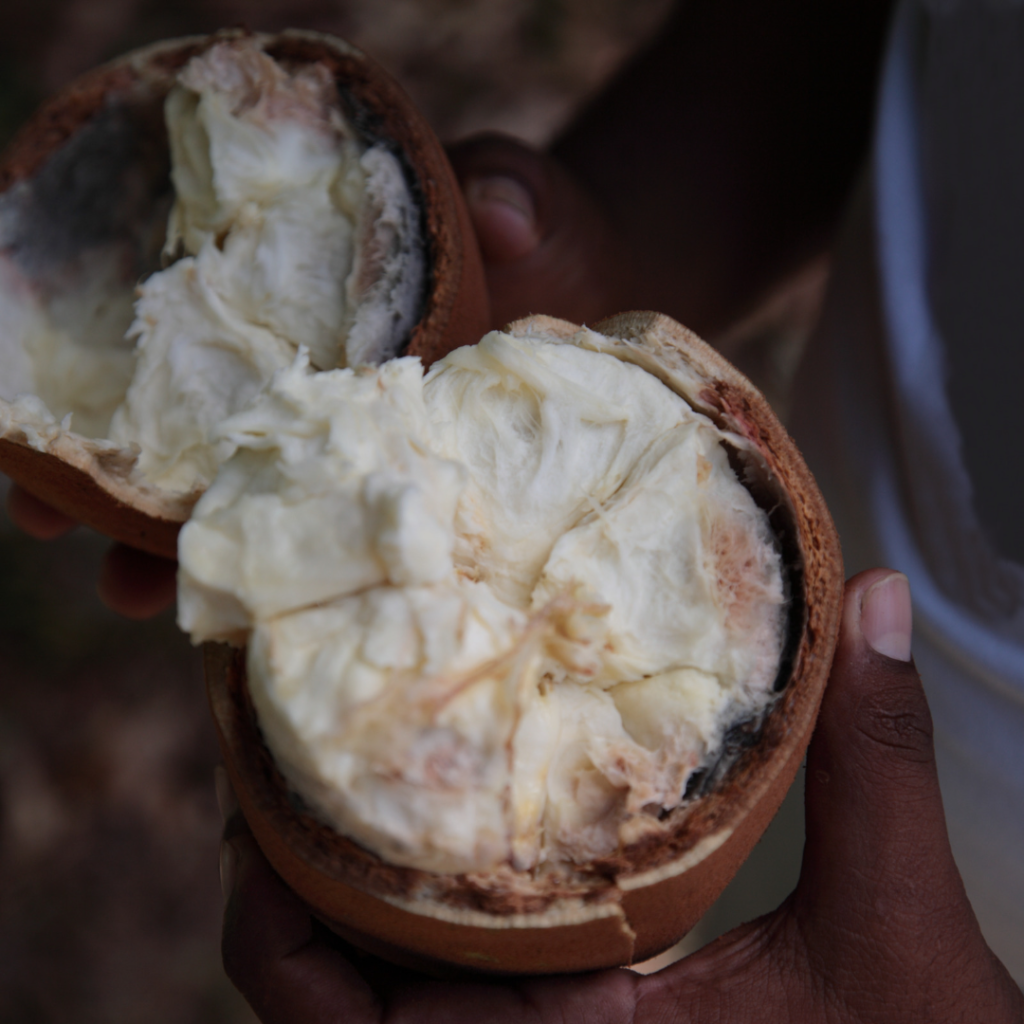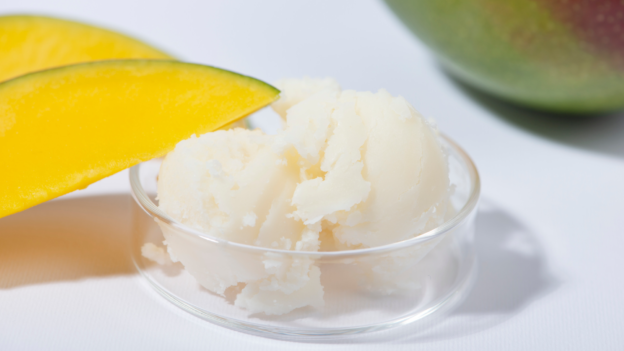As a cosmetics formulator, I place special value on natural ingredients. Not only does it have marketing appeal with an increasing percentage of the consumer base, but it is also the responsible thing to do. We should save our petroleum reserves for things we can’t make any other way (plastics, medicines) and strive to use renewable resources for our products. If you’re a formulator who’s passionate about natural ingredients, you may be wondering about the differences between two popular butters, cupuacu butter (INCI: Theobroma grandiflorum seed butter) and mango butter (INCI: Mangifera indica seed butter). Both of these natural ingredients offer unique benefits and drawbacks and understanding them can help formulators make the best choice for their specific product.
One of the most immediately apparent and significant differences between cupuacu butter and mango butter is their texture. Cupuacu butter, as it ships to you raw, can have a hard, grainy appearance. This can be solved by slowly melting the product and then cooling it quickly in a refrigerator. This brings out a smooth, silky texture that feels luxurious on the skin, making it a great choice for lotions, creams, and other moisturizing products. Cupuacus composition makes it easier to bind water, and so it’s used in some high-end moisturizers for that purpose. Mango butter, on the other hand, is softer and more pliable, somewhat richer, making it ideal for use in hair conditioners, lip balms, and other similar products.
These structural differences can be explained by examining the butters’ fatty acid composition. Cupuacu butter is particularly rich in oleic and stearic acid, while mango butter contains palmitic, oleic, and stearic acids. Oleic acid is a great emollient and can help to repair the skin barrier, while stearic acid helps to prevent moisture loss. Palmitic acid is known for its ability to form a protective layer on the skin. This allows mango butter to play the role of a mild occlusive on top of the skin, to prevent Trans-Epidermal Water loss, more easily than cupuacu.
In addition to these primary fatty acids, cupuacu butter also contains smaller amounts of linoleic, linolenic, and arachidic acids, all of which contribute to its moisturizing and anti-inflammatory properties. Mango butter, on the other hand, contains smaller amounts of linoleic and linolenic acid, as well as myristic and lauric acid, which can help to soothe and protect the skin.
As always, cost is always a consideration when choosing ingredients for a cosmetic product. There is a significant difference between the cost of cupuacu butter and mango butter. Cupuacu butter is typically more expensive as it requires more intensive extraction and processing. However, the luxurious texture and nourishing properties often make it worth the investment for a premium product. Mango butter is more affordable, making it an excellent option for those formulating on a budget.
Cupuacu butter is a creamy, light-yellow color, while mango butter is a paler yellow. Both butters usually have a mild, nutty aroma, but mango butter also has a sweet, fruity scent that can add a pleasant aroma to a cosmetic product. This can help you save money on fragrance oil, and is also important to know if you’re trying to avoid fruity aromas.

Cupuacu butter is sourced from the cupuacu tree, which is native to the Amazon rainforest in South America. It’s a popular ingredient in traditional medicine in Brazil and is used to treat a range of skin conditions. Mango butter, on the other hand, is sourced from the kernels of the mango fruit, which is native to tropical regions in Asia and Africa. Mango butter has a long history of use in Ayurvedic medicine and is known for its moisturizing and anti-inflammatory properties.
While both butters are stable at room temperature, cupuacu butter has a higher tendency to form granules in finished products than mango butter. This can be managed by slowly melting and then rapidly cooling the butter before incorporating it into a formula. If you’re looking to create a more stable product that won’t melt or soften easily, cupuacu butter may be the better choice. If the desired product is softer, mango butter can be an excellent choice.
I encourage you to try both of these in your formulations!

